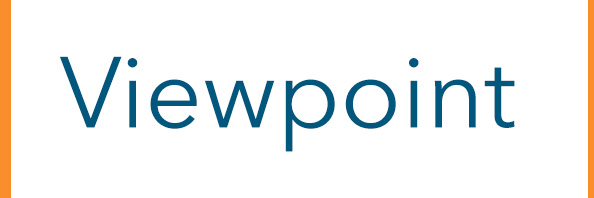Community colleges have internalized the identity that they have democratized higher education with their open-access and open-enrollment practices. Yet a history of high enrollment and low completion rates constantly keeps them struggling to find ways to improve.

Whether facing performance-based funding accountability measures, funding cuts or limits to tuition increases, the onus is on community colleges to find durable and sustainable solutions to improve their enrollment, persistence and graduation metrics.
According to the Community College Research Center, almost 400 community colleges see guided pathways as a potential solution. A framework of curriculum and student services reforms, its prescriptive course-planning process and proactive advising strategies have shown promising results. However, interviews with faculty members at guided pathways colleges tell stories of a complicated adjustment process to this transformative model. Some see mission alignment and potential, while others see upheaval in their organizational culture. Institutionalizing – not just implementing – guided pathways must be the focus, and for that, faculty buy-in is paramount.
Pathways’ roots
Guided pathways as a model and framework looks to improve institutional outcomes, most notably retention and completion rates, by implementing interventions and innovations in student services, teaching and curriculum and program planning. Touted in the book Redesigning America’s Community Colleges: A Clearer Path to Student Success (Harvard University Press, 2015), guided pathways can trace its practice back to 2004. At the time, low completion rates of community colleges had drawn the attention of policymakers due to fairly recent national reporting measures that allowed researchers to compare college outcomes, data that were generally unavailable prior to 1990.
Following the book’s release, the American Association of Community Colleges, with funding from the Bill & Melinda Gates Foundation, began a project to support a select group of community colleges with guided pathways. Since then, guided pathways has significantly expanded, and reports indicate promising results from colleges that have adopted it.
Four core principles
Community colleges implement guided pathways in ways that best fit their individual needs; thus, models may differ by institution or by state. Uniting their efforts, though, are four core principles that remain consistent regardless of location:
- Create a clearly defined path toward a degree or certificate.
- Help students choose their best path.
- Keep students focused on completing their path using wraparound services.
- Ensure students are learning while studying within their path.
Institutions’ experiences with guided pathways have communicated the model is more than an initiative or a simple intervention; implementing the model alters a college’s organizational norms in ways best described as transformational.
Fundamentally, guided pathways assumes students are more likely to complete a degree or a certificate at a community college if they set their goals from the start of their educational journey and receive holistic supports. In order to implement the various interventions that make up this model, community colleges make changes to internal structures, such as course sequencing and availability; cross-departmental scheduling collaboration; and shared advising responsibilities. Faculty and faculty leaders describe these modifications using consistent terms like paradigm shift, culture change, new framework and lens.
Implementing the principles of guided pathways can penetrate the organizational culture of an institution, and faculty responses and reactions should be considered. For example, guided pathways uses course-organization strategies designed to reduce choice confusion by winnowing a large catalog down to discrete options relevant to a particular degree or interest area, sometimes called a meta-major. In fact, Redesigning’s authors use the metaphor of a cafeteria to represent the wide array of course choices available to students. The theory is with limited choices, students will be less likely to take non-relevant courses, avoid unneeded debt and complete their academic goals.
Alternately, some faculty expressed concerns that having fewer options prevents students from exploring. This notion that community colleges help students find themselves is encoded in their institutional DNA.
Additionally, the practice of paring back course offerings received push-back from programs that feared their courses becoming obsolete or unwanted. In other words, taking items off the menu would significantly reduce the variety at the buffet table. (Although in an interesting – but not surprising – observation, career and technical program faculty expressed few or no concerns about guided pathways’ course structures. Their community programs, for the most part, already use industry-aligned, prescriptive course plans.)
An inclusive team approach
In another impact on community colleges’ institutional culture, creating paths and meta-majors has expanded the decision-making community in curriculum areas typically under the purview of individual academic departments. Institutions of higher education have an academic tradition of content expertise, and community colleges augment that with an intentional focus on classroom instruction. In the practice of shared governance, then, faculty expect a voice in curriculum decisions.
As colleges began to analyze efficiencies toward program completion, academic departments were asked to coordinate course scheduling, often with input from academic advising departments in student affairs divisions. An improved student experience was accompanied by some academic departments’ perceptions of a loss of control over their autonomy and decision-making. Faculty often appeared to oppose guided pathways when they felt their voice was not included or when they perceived shared governance practices were subverted.
Successful adoption of guided pathways commonly resulted from early communication and inclusion, along with strategies to inform faculty and staff of the why. Understanding faculty experiences, perceptions and expectations aided administrators in preparing their instructional teams for the institutional changes. Those institutions, in turn, intuited and understood the existing organizational cultural norms and created space for faculty voices.
Effective strategies included gathering early feedback from faculty while presenting concerning data metrics as a problem to solve collectively. Data-focused meetings on concerning outcomes raised awareness and built a sense of urgency. One particularly effective data set was presenting faculty with the number of wasted credits and accompanying debt that students were racking up.
In the end, appealing to people’s dedication to and shared responsibility toward students worked. In fact, faculty described a positive reception of guided pathways in understanding how it helps students.
It’s no surprise colleges with leaders adept at managing transformational change and with strong institutional communication cultures were able to adopt and then implement guided pathways. Commitment to this model means years-long efforts of reorganizing and adjusting as well as internalizing the framework as a new institutional culture rather than another passing initiative.
Perhaps viewing the macro just like the micro is key: faculty and administration need to stay on the path and persist throughout this process, just like they ask their students.





